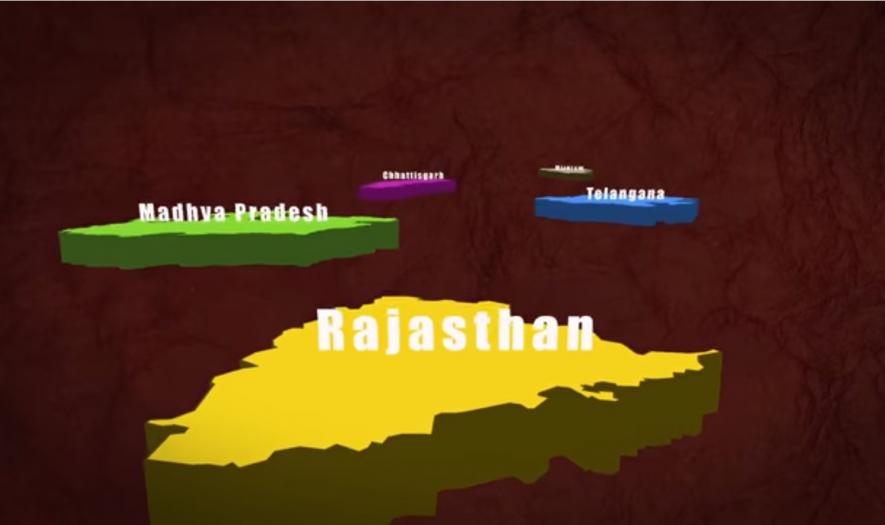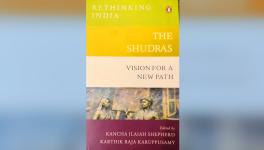Assembly Polls: Ten Crucial Takeaways Ahead of 2019

After the intense drama during the five state polls in India, often touted as the semi-finals of the 2019 general elections, I see a spate of good news ahead for the nation as a democratic polity.
Competition Back Again
First, the three Hindi heartland states have voted out the ruling Bharatiya Janata Party (BJP), and have brought in the main opposition party, Congress, albeit with a close fight between the two, while the remaining two states voted out or restrained Congress, and upheld the regional forces. So, the nation is neither Congress-mukt (free), nor BJP-mukt, and neither free from regional forces. It is a state of near-perfect competition for the elections ahead. There will be alliances, but the relevance of multiple parties will remain. For example, the new Congress governments in Rajasthan and Madhya Pradesh depend on the support of smaller parties, such as the Bahujan Samaj Party, Samajwadi Party, and also independents.
A Chastened Ruling Party
Second, the defeat of BJP in the three Hindi heartland states, and earlier in Karnataka and in Gujarat, where it formed a laboured government, is a strong warning for the ruling party, the Narendra Modi-Amit Shah leadership, and the cadre at the grassroots—that victory is not a given in 2019. And that brand Modi, once thought to be strong and decisive, has its weaknesses. Working hard on the ground, putting the organisation on a strong footing, greater coordination with the Rashtriya Swayamsevak Sangh and its mass fronts and a democratic multi-leader face of the party may be some aspects under BJP’s consideration. No wonder, talk around projecting Nitin Gadkari as an alternative leader, should BJP fall short of 200 seats in Lok Sabha in 2019, have begun.
Congress Progresses, but Still Weak
Third, while this is the best moment for Congress, more so for its president Rahul Gandhi exactly one year after he took over the party’s reins, there is also the factor of a weak victory in MP (lower votes, higher seats) and Rajasthan (in spite of an extremely unpopular incumbent state government). The fact is that the electorate is still not as disenchanted with the Centre as they were with the state governments, especially in Rajasthan (as proved by the Outlook-Lokniti-CSDS post-election poll in these states). So, Congress, which managed to put up a strong fight, has a long way to go at the grassroot-level, mindful of the fact that the three states have surely voted against BJP, but not necessarily for Congress. That's good news for a competitive democracy.
Aggressive Hindutva on Backfoot
Fourth, the power of Hindutva as an electorally potential weapon is blunted for sure. On the one hand, the Hindi heartland voters are asking questions about the agrarian crisis and unemployment. On the other hand, Congress has learnt to soften its ‘minority-appeasing’ image by following a ‘soft’ Hindutva line through Rahul Gandhi's temple visits, Shiv bhakti espousal, Shashi Tharoor's 'Why I am a Hindu?' book, and Congress taking a middle path on the Sabrimala issue. The Congress promised gaushalas (cow shelters) and endorsedgomutra medicines in its Madhya Pradesh and Chhattisgarh manifestos as well. This may turn out good for the nation where aggressive Hindutva has the potential to cause riot-like situations.
People's Issues at the Forefront
Fifth, and the best one, is an increased focus on bread-and-butter issues. The electorate is focussed on farmers' distress, unemployment, youth discontent, problems arising out of demonetisation and goods and services tax. The BJP-led Centre has to look at these closely and create counter-policies and measures as part of governance, keeping the 2019 elections in mind. On the other side, Congress will have to work very hard to deliver what they have promised in the three states – loan waivers (already announced), jobs, unemployment stipend, women's security, and transforming agriculture – with the nation closely watching their performance. So, while the bullet train or Rafale or Ram statue and temple can wait, roti-kapda-makaan-naukri-krishi will call the shots in the year ahead. Both the BJP-led National Democratic Alliance and the Opposition Mahagathbandhan (Grand Alliance) will now be forced to come out with pro-people common minimum programmes soon, and there will be a clash of competing development agendas and narratives, which the nation so desperately needs.
Minorities Back in the Reckoning
Sixth, these Assembly polls signal the return of the largest minority, the Muslims, in the political narrative of the nation, which is the home to the second largest number of Muslims in the world. The BJP ignored them politically in the last half a decade, and Congress avoided them lest they are dubbed pro-minority, though using them electorally. With regional forces holding forts, and winning margins becoming narrower, Muslim voters will find themselves significantly placed.
With a population over 150 million in India, Muslims can decide results in around 80 Lok Sabha seats, and have considerable influence in around 135 more. While BJP cannot change its tactics with approximately 150 days left to the hustings, the Opposition alliance will go all out to seek a consolidated mandate from the minorities. Considering Muslims as outsiders, seeking their ghar wapsi, not being able to restrain the spate of lynching, targeting Muslim men through love jihad and a flawed triple talaq Bill (while instant Talaq needs to be banned for sure), BJP has largely lost the remnants of the minority support it had, which the opposition will attempt to consolidate.
Dalit-Tribal Electorate
Seventh, BJP went all out to consolidate the Dalit and tribal electorate across the country and reaped its benefits in the 2014 general elections. The party’s loss in Madhya Pradesh and Chhattisgarh shows that this is not a given any more. In the Hindi heartland, a slow shift in Scheduled Caste and Scheduled Tribe voters towards the Opposition was seen in all the bypolls in Uttar Pradesh, and in the state Assembly polls in Gujarat, Madhya Pradesh, Chhattisgarh and Rajasthan, and to a lesser extent in Karnataka, in spite of BJP's laboured lone victory in Gujarat.
The rise of new Dalit leaders in Gujarat and UP, the return to reckoning of BSP in the Hindi heartland, and the Bharatiya Tribal Party winning seats in Gujarat are crucial landmarks. MP and Chhattisgarh also threw up independent voices of tribals and Dalits, which can only benefit the Opposition, if it is politically astute enough to take advantage of the same.
Allies in Alliances Stronger
Eighth, the preference for strong alliances rather than strong leaders is the reality of the moment. The Modi-led NDA has lost 12 allies over the last 50 months, and has gained just one officially – Janata Dal (United). It has a few sympathisers who are fence-sitters (Telangana Rashtra Samithi, AIADMK and Biju Janata Dal).
Congress has consolidated its position as the core of any opposition alliance, but still falls short of calling the shots all by itself. BJP was too dominant a force within the NDA, but now with JD(U), Akali Dal and Shiv Sena asking for their pound of flesh in seat-sharing, the BJP is relenting.
There is an ongoing attempt to create a third front, the Federal Front, with KCR and Mamata Banerjee of the Trinamool Congress taking the lead, but it is yet to see any development on the ground, and may be a non-starter. The political narrative of mocking Rahul as an 'immature kid' or Pappu has also taken a beating, and for the good of the nation, because democracy thrives only when there are multiple possible leaders, and not one dominant face, such as Indira Gandhi or Narendra Modi.
Populism and Relief Measures
Ninth, we saw a spate of populist budgets, both by the Centre and state governments, keeping in view 2019, the election year. Populism in the form of loan waivers, unemployment stipends, free amenities in health, relief to urban poor, insurance and tax reliefs, etc. are bad long-term policy, but an essential short-term measure, especially in the current situation of an agonising farm economy, rising prices and low employment figures.
Institutions & Media Neutrality
Tenth, and final, in a situation of keen contest with chances being even on both sides, the media, the police, the election machinery usually go by the book, maintaining neutrality and balance, as they are not too sure as to who will come to power. Power always corrupts, and absolute power corrupts absolutely. But the power dynamics in the 2019 elections will have some equilibrium of sorts, which, in fact, will hopefully work towards fairer elections.
The writer is a media academic and commentator, and currently the Media Dean of Pearl Academy, Delhi and Mumbai. The views are personal.
Get the latest reports & analysis with people's perspective on Protests, movements & deep analytical videos, discussions of the current affairs in your Telegram app. Subscribe to NewsClick's Telegram channel & get Real-Time updates on stories, as they get published on our website.























